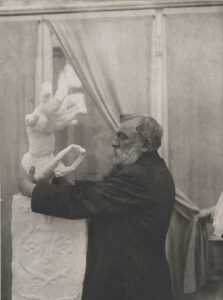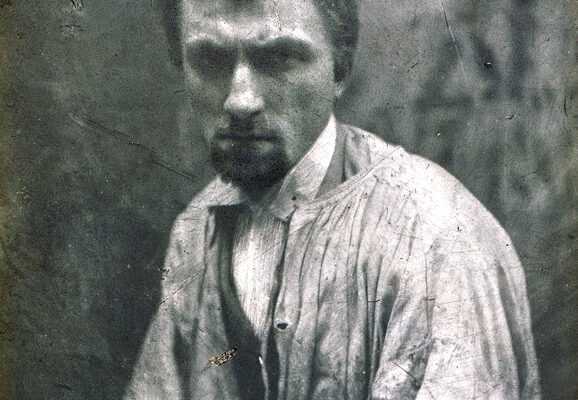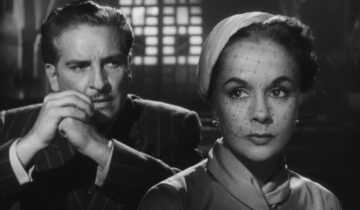By Kristen Pignuolo, Curatorial Assistant
While the concept of the artist as laborer might seem foreign to us today, it is actually closer to the 19th-century European idea of the artist. Before the 19th century, artists and sculptors were thought of as artisans, workers with specialized knowledge and skills. In medieval Europe, a system of guilds arose as craftspeople, ranging from shoemakers and locksmiths to painters and sculptors, united to protect their common interests and oversee the practice of their craft/trade in a particular area. As the guild system came under scrutiny in early modern Europe, countries such as France and England established their own Royal Academy of Arts (1648 and 1768, respectively). In 1776, the Parisian guild of painters and sculptors, the Académie de Saint-Luc, was dissolved and many of its members joined the Royal Academy of the Arts. While the Royal Academy was disbanded during the French Revolution in the 1790s, it was later revived as the Académie des Beaux-Arts and became the dominant art institution in France.
It was in this system that Auguste Rodin began his career. Rodin came from a working-class Parisian family. His father, Jean-Baptiste, was a minor official in the central administration of the Paris police department. Both Auguste and his sister Marie worked to supplement their father’s income, with Marie working at their uncle’s shop selling religious objects and Auguste cleaning canvases for a painter friend of his father’s. According to the family’s records at the Musée Rodin, Jean-Baptiste Rodin had an annual salary of 1,400 francs. It has been estimated that for a Parisian family of four to live a bourgeois, meaning a comfortable or “middle-class,” life at this time, they would need to earn an annual income of at least 5,000 francs.1
From an early age, Rodin showed interest and talent in drawing and, at age 16, he enrolled at the École Spéciale de Dessin et de Mathématiques, colloquially known as the Petite École, a government school that trained students in the decorative arts. While the Petite École trained its students in the decorative arts, it was the ultimate goal of many of them (Rodin included) to attend the Académie des Beaux-Arts (known as the Grande École), the school that trained painters and sculptors. Rodin applied to the Grande École three times, making his final application at age 19, but was denied admission every time.
After he left the Petite École, Rodin worked in the atelier of a decorative sculptor for five francs a day, stirring plaster and cutting molds for architectural ornaments. At some point, Rodin joined the studio of the sculptor Albert-Ernest Carrier-Belleuse (whose work, Between Two Loves, is on view in True Nature) as a part-time assistant, transitioning to a full-time employee in 1865. During this time, Rodin rented an old stable to use as his studio, leaving him with next to no money to hire models. Rodin instead used people in his life like his partner Rose Beuret or people he saw on the street, like the Italian peasant Pignatelli (the model for his Saint John the Baptist Preaching, on view in True Nature). Later in life, Rodin spoke of the early period of his career working as a craftsman, saying, “I did not know that I had any talent. I knew I had skill, but never thought I was anything more than a workman. I did not sign my work and I was not known.”2
In the late 1870s, Rodin gained recognition for his work and subsequently received several commissions, one for a door to a decorative arts museum in Paris and the other a monument for the city of Calais (both featured in True Nature). While recognition and commissions improved Rodin’s circumstances, it would still be several years before Rodin would be financially secure.3

Rodin’s working-class background and early career actually informed a lot of what made him so innovative as an artist; he took techniques he learned working as a craftsman, such as assemblage, and used them in his own sculptural practice. The technique of assemblage, where Rodin created new works by reassembling existing pieces that could be reproduced by casting, can be seen in several pieces in True Nature, such as Female Centaur (which combines a human torso originally designed for The Gates of Hell and a horse’s body for an equestrian statue) and Large Clenched Hand with Figure. With this appropriated technique, Rodin succeeded in creating tension between seemingly disparate elements. It was in part Rodin’s working-class background and his experience as a craftsman that helped make Rodin the “Father of modern sculpture.”
1 Alain Plessis, The Rise and Fall of the Second Empire, 1852-1871, trans. Jonathan Mandelbaum (Cambridge: Cambridge University Press, 1988), 125.
2 Ruth Butler, Rodin: The Shape of Genius (New Haven: Yale University Press, 1993), 102.
3Odile Ayral-Clause, Camille Claudel: A Life (New York: Harry N. Abrams, 2002), 31-32.










